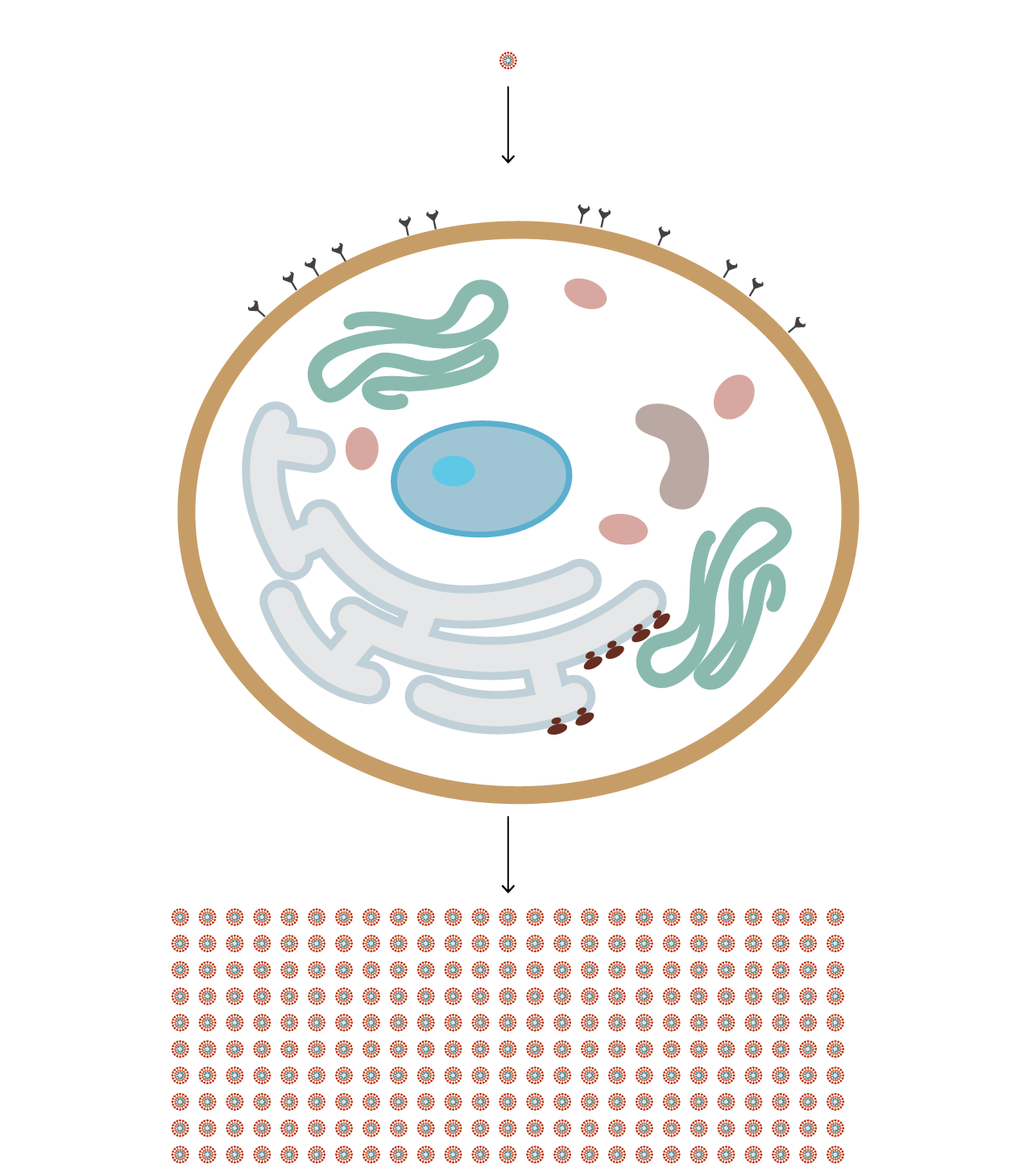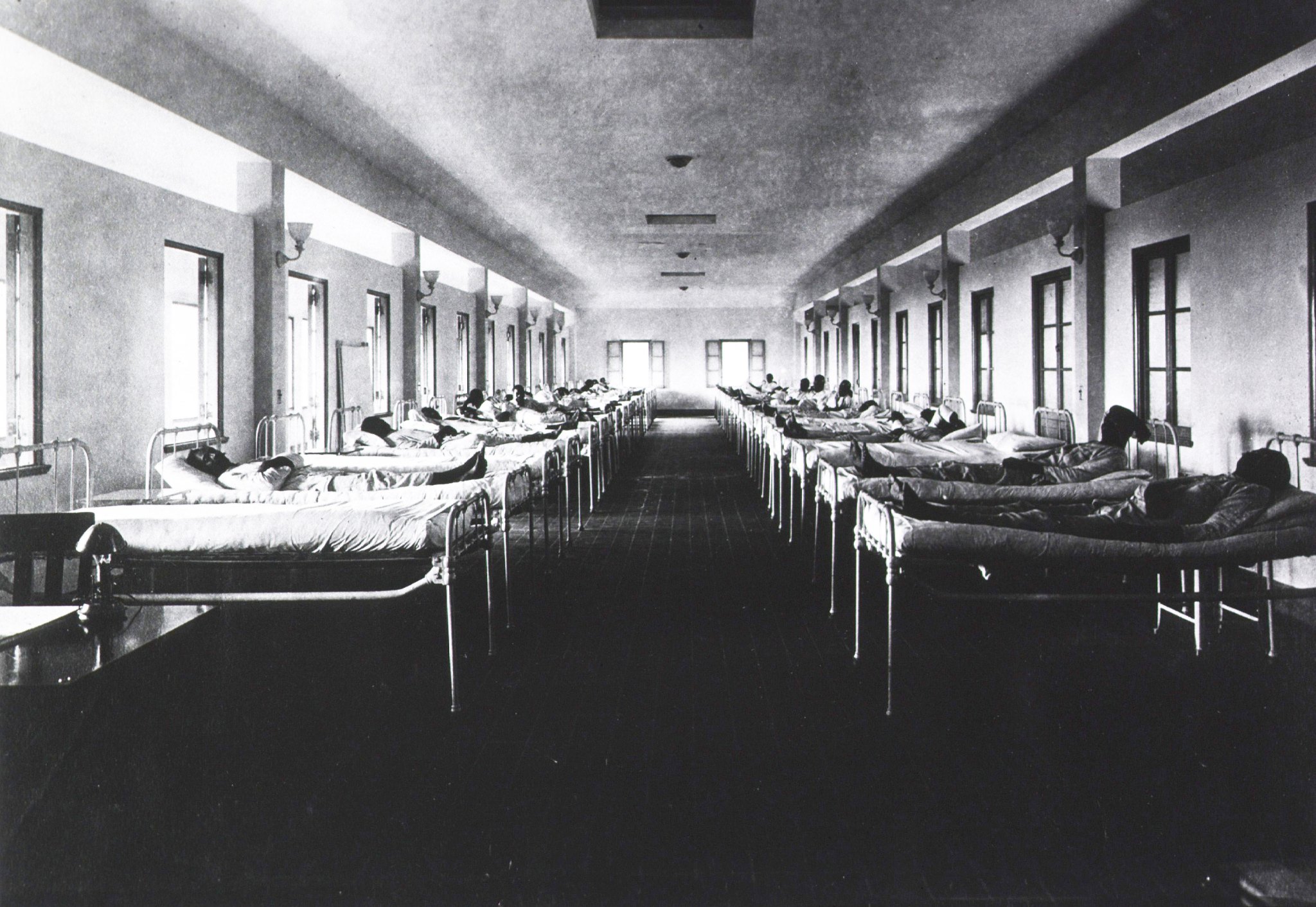Coughing and Scoffing: Inequities in the Time of COVID-19
As a new coronavirus not previously detected in humans, COVID-19 has generated--and continues to generate-- biomedical and public health challenges, as well as confusion and controversy around its origins, methods of transmission, and modes of prevention. At the same time, COVID-19 has disproportionately impacted certain communities, especially communities of color. Like prior pandemics, the COVID-19 pandemic reflects and exacerbates longstanding structural, systemic inequities that determine individual and communities’ health and healthcare.
This module focuses on the COVID-19 epidemic in the US through June 2021.

Source: LA Times
Learning Objectives:
- Why COVID-19 has disproportionately impacted certain racial and ethnic groups.
- How COVID-19 reflects and intensifies existing inequities.
- Proposals to address racial health disparities related to COVID-19 and other pandemics/epidemics/endemics.
NOTE: Users who are pursuing the Unlocking Health Equity badge, credit through the VCU Health System DEI learning requirement, or those who would like to claim continuing education credit must complete and submit the Reflection Activity at the bottom of this page. Please visit VCU Health Continuing Education for more information.
Learning materials:
We ask that you spend an hour reading and viewing the materials below.

"In cities across the nation, black people struck by the flu were often left to fend for themselves. They received substandard care in segregated hospitals, where they could be relegated to close quarters in basements, or they were only allowed admittance to black-only hospitals. PUBLIC DOMAIN"
Source: theundefeated.com
Listen: Racial Health Disparities In Richmond, Virginia, From 1918 Flu To Coronavirus (3:42)
Resources
We ask that you spend the hour reading and viewing the resources above and viewing as many of the linked resources below as possible prior to completing the reflection activity. Reflections will be evaluated, and individuals may be asked to resubmit if answers are incomplete or do not meet the length requirement.
History
Blain, K. N. (2020, August 13). Syllabus: A history of anti-black racism in medicine [SEE ESPECIALLY THE SECTION ON COVID-19]. AAIHS. Retrieved January 27, 2022, from https://www.aaihs.org/syllabus-a-history-of-anti-black-racism-in-medicine/
COVID-19 Pandemic Illuminates Anti-Chinese Racism And Xenophobia
Social Science Research Council. (n.d.). #coronavirussyllabus a crowdsourced cross-disciplinary resource. Retrieved January 27, 2022, from https://covid19research.ssrc.org/wp-content/uploads/2020/10/Coronavirus-syllabus_20201019.pdf
(2020). Flatlining: Race, Work, and Health Care in the New Economy. YouTube. Retrieved January 27, 2022, from https://www.youtube.com/watch?v=apCcNrxWul4.
(2020). History in an Epidemic. Retrieved January 28, 2022, from https://www.youtube.com/watch?v=67PCp1IP2MY.
Read and compare/contrast:
Jones, D. S. (2020). History in a crisis — lessons for covid-19. New England Journal of Medicine, 382(18), 1681–1683. https://doi.org/10.1056/nejmp2004361
Peckham, R. (2020). Covid-19 and the anti-lessons of history. The Lancet, 395(10227), 850–852. https://doi.org/10.1016/s0140-6736(20)30468-2
Piret, J. & Boivin, G. (2021). Pandemics throughout history. Frontiers in Microbiology, 11. https://doi.org/10.3389/fmicb.2020.631736
Disparities in Impact of Covid:
Nana-Sinkam, P., Kraschnewski, J., Sacco, R., Chavez, J., Fouad, M., Gal, T., AuYoung, M., Namoos, A., Winn, R., Sheppard, V., Corbie-Smith, G., & Behar-Zusman, V. (2021). Health Disparities and equity in the era of COVID-19. Journal of Clinical and Translational Science, 5(1). https://doi.org/10.1017/cts.2021.23
Martin, N., & Johnson, A. (2020, December 22). How covid-19 hollowed out a generation of young black men. ProPublica. Retrieved January 28, 2022, from https://www.propublica.org/article/how-covid-19-hollowed-out-a-generation-of-young-black-men
THE AFRICAN AMERICAN POLICY FORUM. (n.d.). Under the blacklight [EPISODES 1-7, 12]. AAPF. Retrieved January 28, 2022, from https://www.aapf.org/blacklight
Hamel, L., Lopes, L., Mañana, C., Artiga, S., & Brodie, M. (2020, October 14). The undefeated survey on race and health - main findings. KFF. Retrieved January 28, 2022, from https://www.kff.org/report-section/kff-the-undefeated-survey-on-race-and-health-main-findings/
Data:
Johns Hopkins Coronavirus Resource Center. (n.d.). Retrieved January 28, 2022, from https://coronavirus.jhu.edu/
Poteat, T. (2021). Navigating the storm: How to apply intersectionality to public health in times of crisis. American Journal of Public Health, 111(1), 91–92. https://doi.org/10.2105/ajph.2020.305944
The color of Covid. Richmond City Health Department. (2020, October 26). Retrieved January 28, 2022, from https://www.vdh.virginia.gov/richmond-city/color-of-covid/
The Covid Racial Data tracker. The COVID Tracking Project. (n.d.). Retrieved January 28, 2022, from https://covidtracking.com/race
Researcher essentials. N3C. (n.d.). Retrieved January 28, 2022, from https://covid.cd2h.org/for-researchers
Corallo, B., Artiga, S., & Tolbert, J. (2021, June 2). Are health centers facilitating equitable access to covid-19 vaccinations? A June 2021 update. KFF. Retrieved January 28, 2022, from https://www.kff.org/coronavirus-covid-19/issue-brief/are-health-centers-facilitating-equitable-access-to-covid-19-vaccinations-a-june-2021-update/
To Respond:
Reducing covid-19 racial disparities. ANA. (n.d.). Retrieved January 28, 2022, from https://www.nursingworld.org/practice-policy/work-environment/health-safety/disaster-preparedness/coronavirus/education/ana-covid-19-video-education/Reducing-COVID-19-Racial-Disparities/
Baptiste, D. L., Commodore-Mensah, Y., Alexander, K. A., Jacques, K., Wilson, P. R., Akomah, J., Sharps, P., & Cooper, L. A. (2020). COVID-19: Shedding light on racial and health inequities in the USA. Journal of clinical nursing, 29(15-16), 2734–2736. https://doi.org/10.1111/jocn.15351
Lavizzo-Mourey, R., & Emanuel, E. J. (2020, September 24). 5 ways the health-care system can stop amplifying racism. The Atlantic. Retrieved January 28, 2022, from https://www.theatlantic.com/ideas/archive/2020/09/how-health-care-can-stop-amplifying-racism/616454/
For further reading:
Rubin-Miller, L., Alban, C., Artiga , S., & Sullivan, S. (2020, September 16). Covid-19 racial disparities in testing, infection, hospitalization, and death: Analysis of Epic Patient Data. KFF. Retrieved January 27, 2022, from https://www.kff.org/coronavirus-covid-19/issue-brief/covid-19-racial-disparities-testing-infection-hospitalization-death-analysis-epic-patient-data/
Rogers, T. N., Rogers, C. R., VanSant‐Webb, E., Gu, L. Y., Yan, B., & Qeadan, F. (2020). Racial disparities in Covid‐19 mortality among essential workers in the United States. World Medical & Health Policy, 12(3), 311–327. https://doi.org/10.1002/wmh3.358
Onwuzurike, C., Diouf, K., Meadows, A. R., & Nour, N. M. (2020). Racial and ethnic disparities in severity of Covid‐19 disease in pregnancy in the United States. International Journal of Gynecology & Obstetrics, 151(2), 293–295. https://doi.org/10.1002/ijgo.13333
Potter, D., Riffon, M., Kakamada, S., Miller, R. S., & Komatsoulis, G. A. (2020). Disproportionate impact of covid-19 disease among racial and ethnic minorities in the U.S. cancer population as seen in CancerLinQ discovery data. Journal of Clinical Oncology, 38(29_suppl), 84–84. https://doi.org/10.1200/jco.2020.38.29_suppl.84
Ndugga, N., Hill, L., Artiga, S., & Haldar, S. (2022, January 13). Latest data on covid-19 vaccinations by race/ethnicity. KFF. Retrieved January 28, 2022, from https://www.kff.org/coronavirus-covid-19/issue-brief/latest-data-on-covid-19-vaccinations-by-race-ethnicity/
Walker, A. S., Sun, A., Avila, Y., Pope, L., & Yoon, J. (2021, May 14). The racial gap in U.S. vaccinations is shrinking, but work remains. The New York Times. Retrieved January 28, 2022, from https://www.nytimes.com/interactive/2021/05/14/us/vaccine-race-gap.html
Stone, W. (2021, June 8). An anti-vaccine film targeted to black Americans spreads false information. NPR. Retrieved January 28, 2022, from https://www.npr.org/sections/health-shots/2021/06/08/1004214189/anti-vaccine-film-targeted-to-black-americans-spreads-false-information
Purnell, T. S., Simpson, D. C., Callender, C. O., & Boulware, L. E. (2021). Dismantling structural racism as a root cause of racial disparities in Covid‐19 and transplantation. American Journal of Transplantation, 21(7), 2327–2332. https://doi.org/10.1111/ajt.16543
Foundation, the A. E. C. (2020, December 14). Kids, families and covid-19. The Annie E. Casey Foundation. Retrieved January 27, 2022, from https://www.aecf.org/resources/kids-families-and-covid-19
Horton, R. C. (2021). The Covid-19 catastrophe: What's gone wrong and how to stop it happening again. Polity Press.
Time to reflect on what you have learned
To get started, click here.
Reflection activity directions
Users who are pursuing VCU’s History and Health; Racial Equity badge, credit through VCU Health System DEI learning requirement or those who would like to claim continuing education credit must complete and submit the Reflection Activity. The form asks the user to submit basic biographical information (e.g., name, department) and to answer one of the following 3 prompts. Your response must be a minimum of 250 words. Reflections will be evaluated, and individuals may be asked to resubmit if answers are incomplete or do not meet the length requirement.
PROMPT OPTION 1: Before you completed this module, what kinds of assumptions did you have about epidemics and limiting their spread?
PROMPT OPTION 2: How were your experiences of the epidemic influenced by some of the social and economic factors detailed in the readings?
PROMPT OPTION 3: Why does COVID-19 affect people of color and immigrants in the U.S. more than others?
